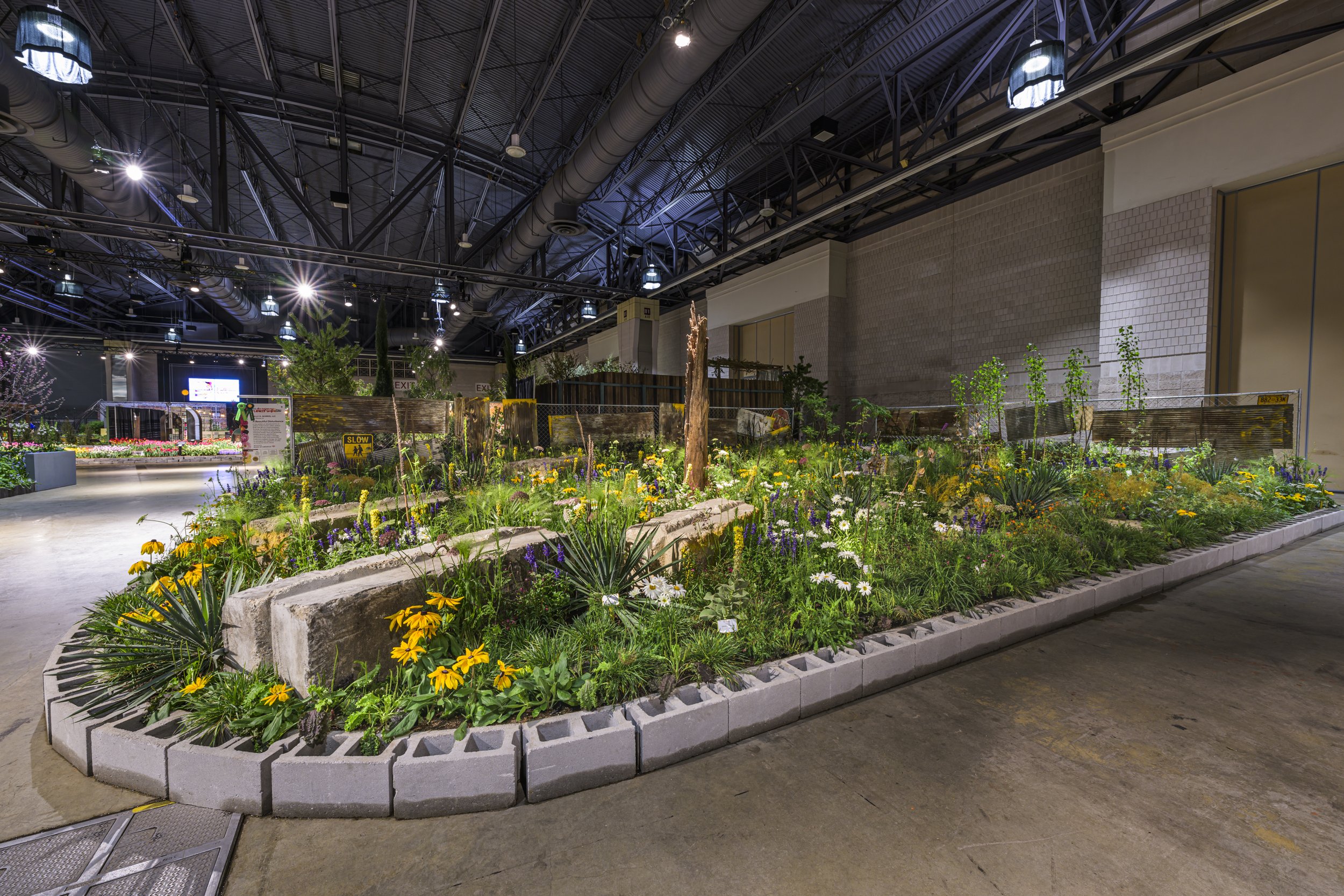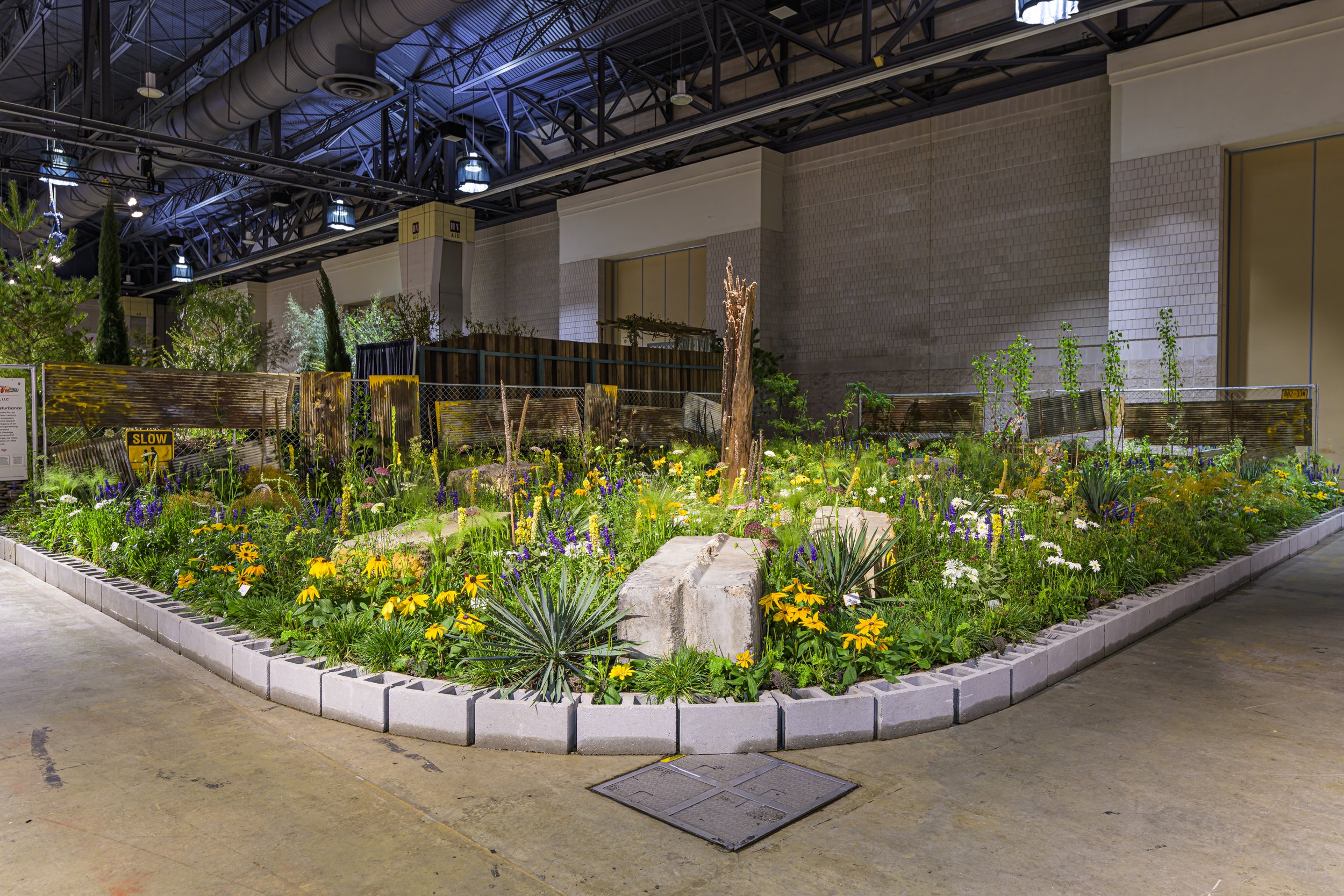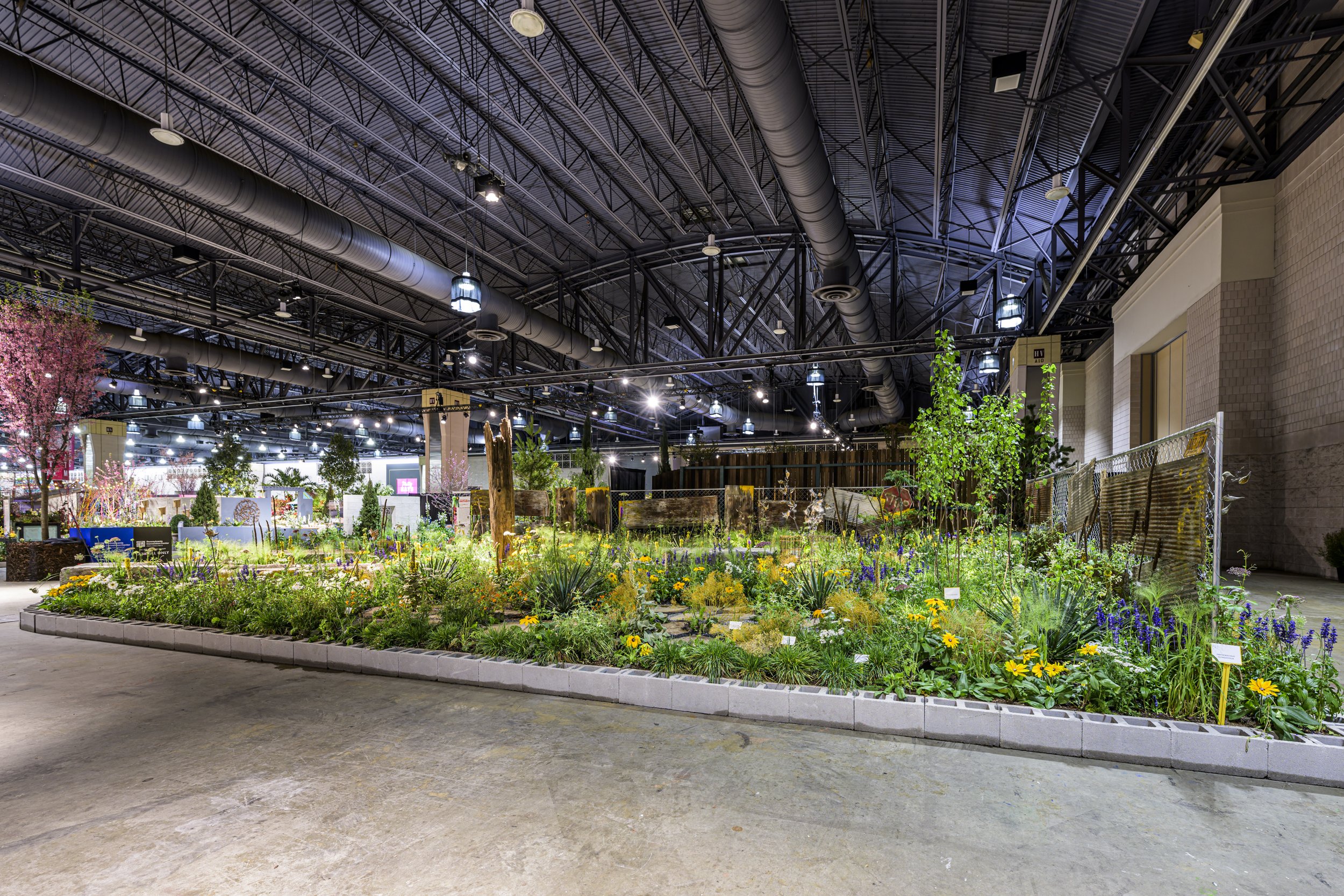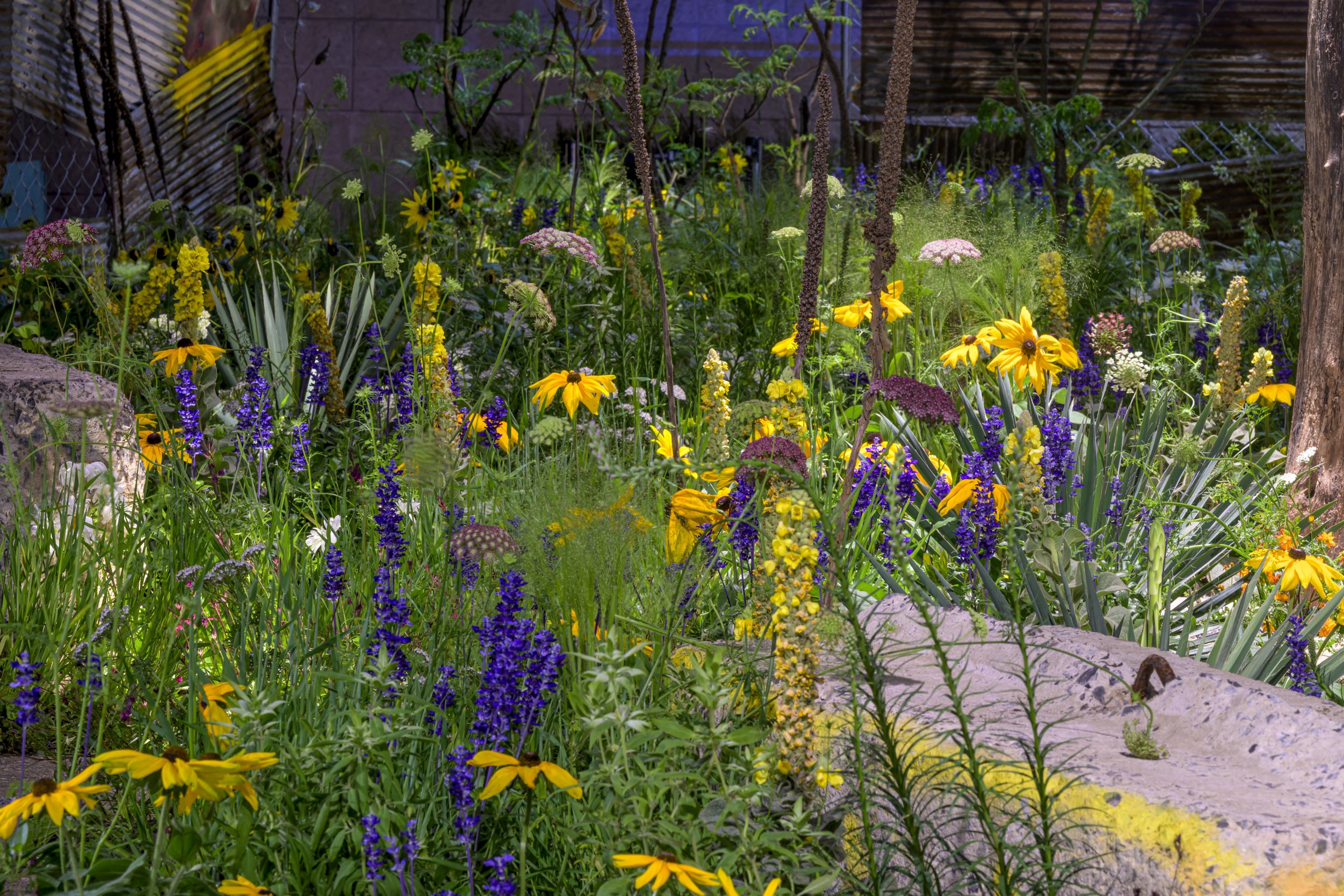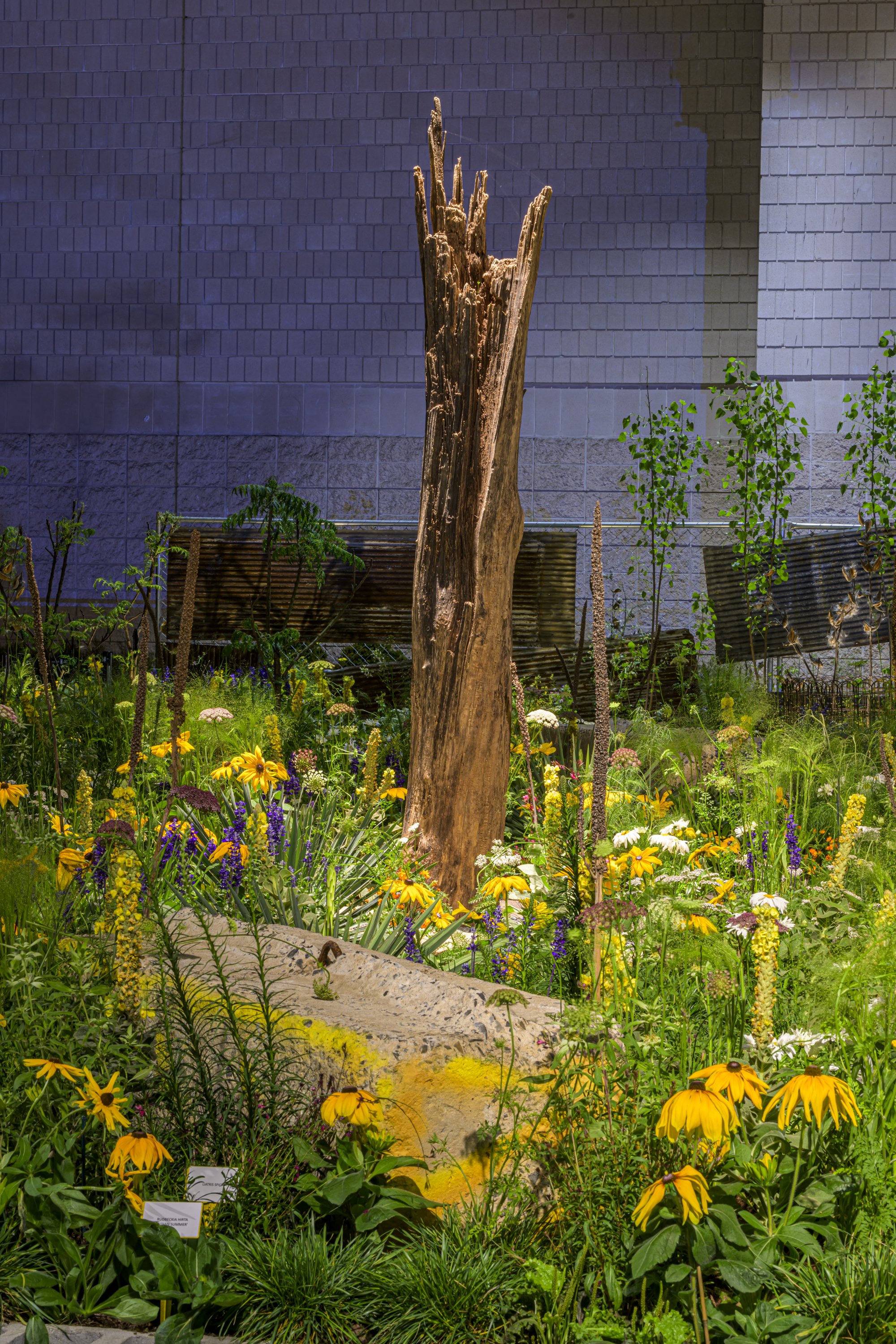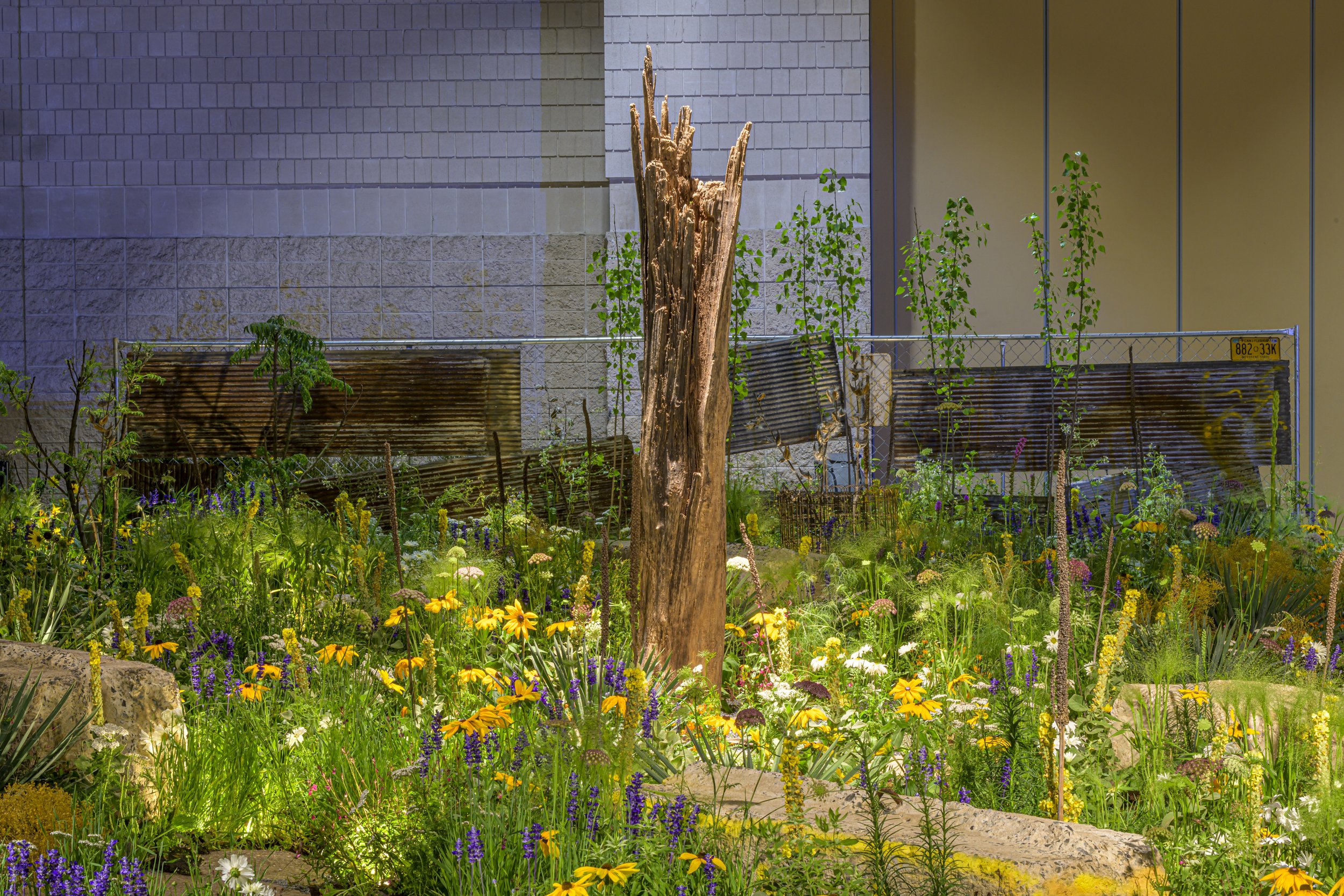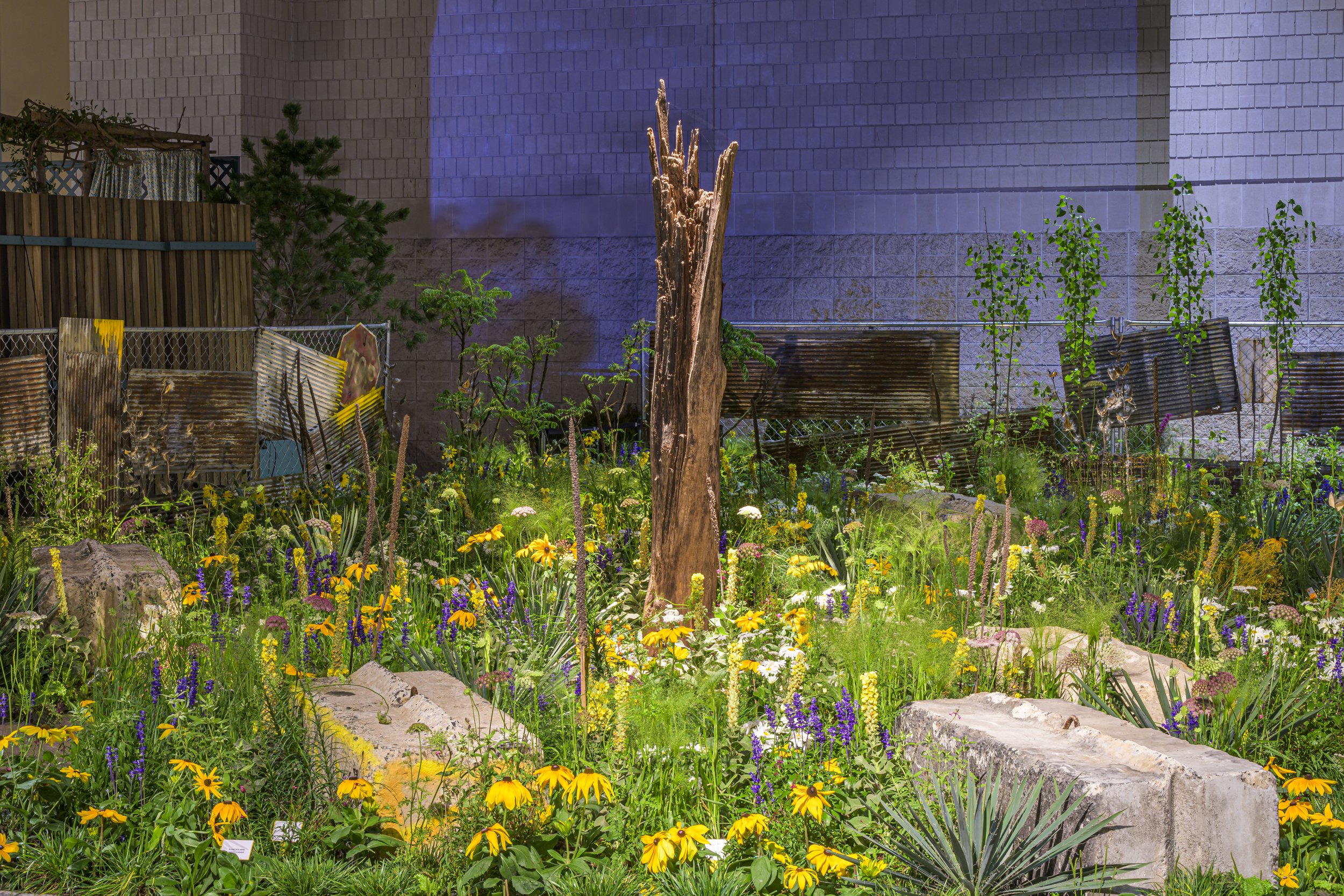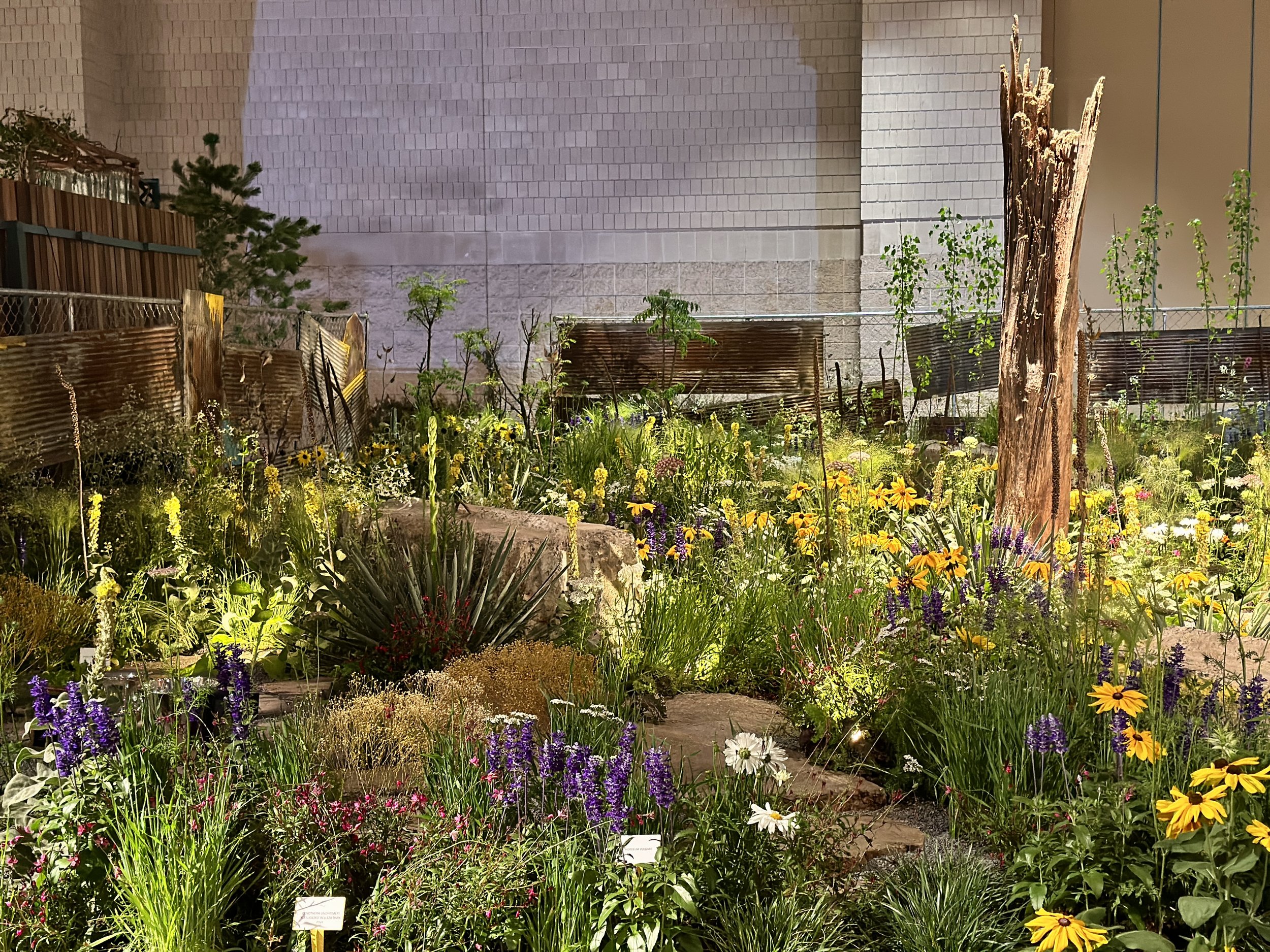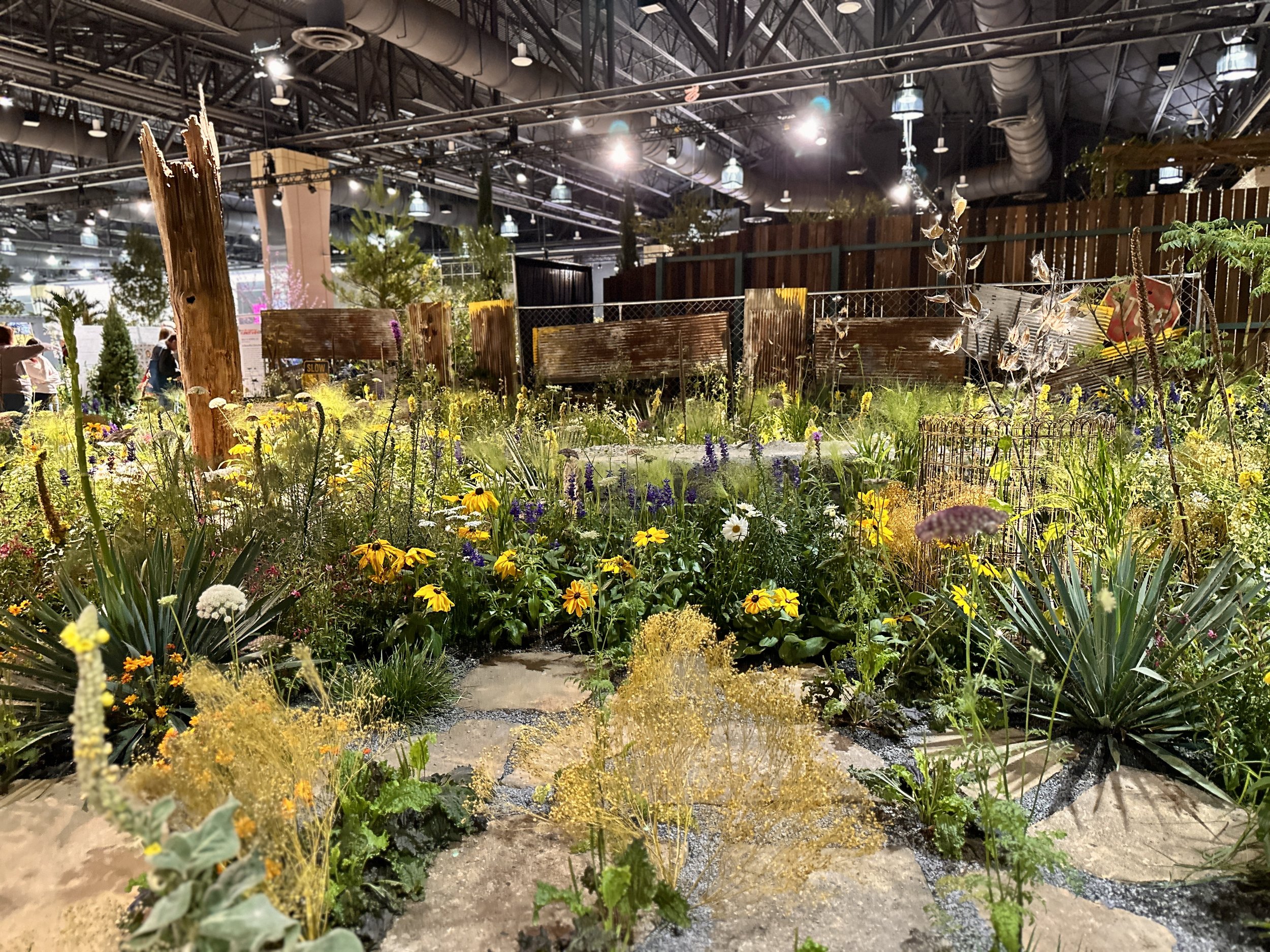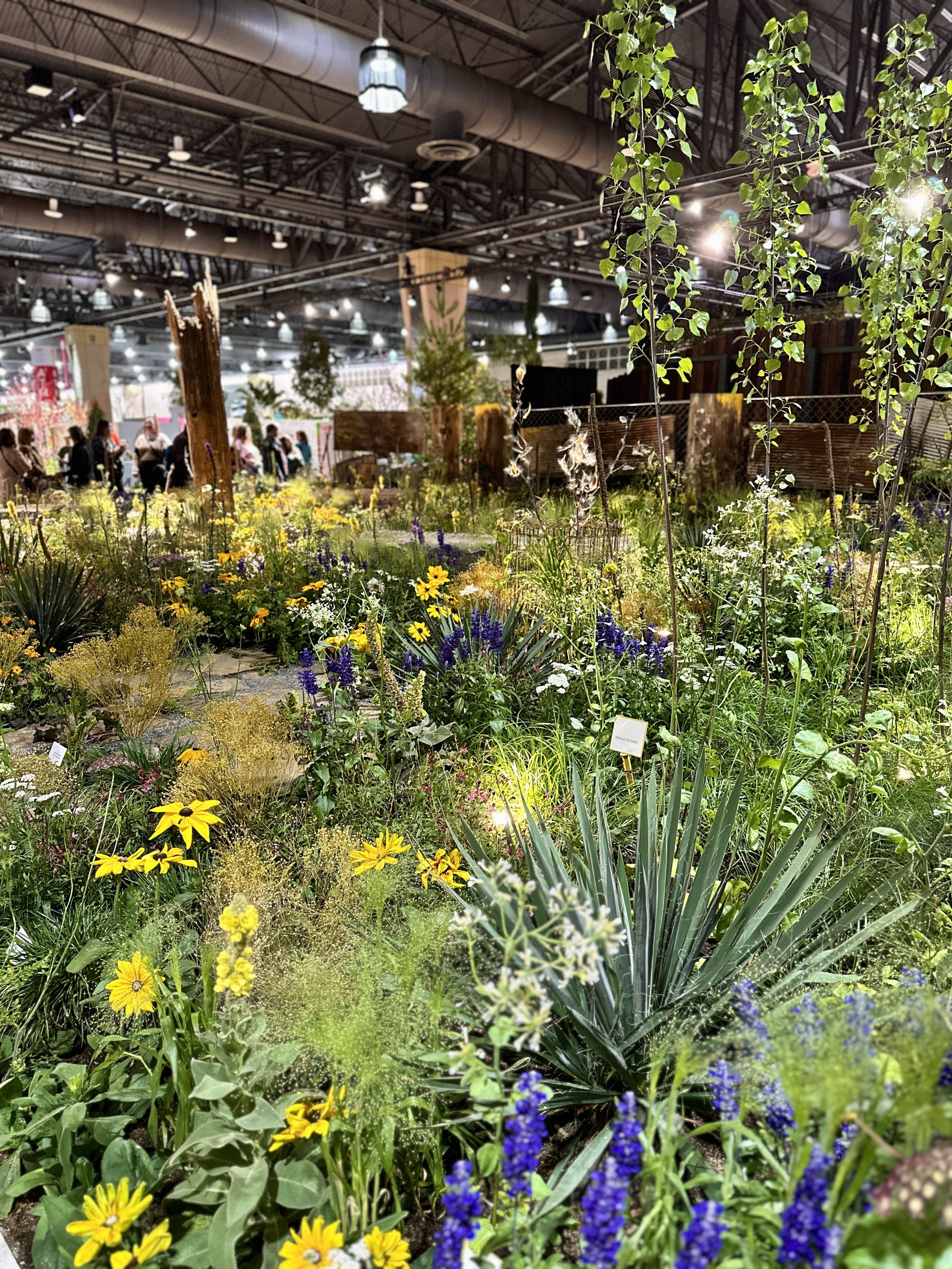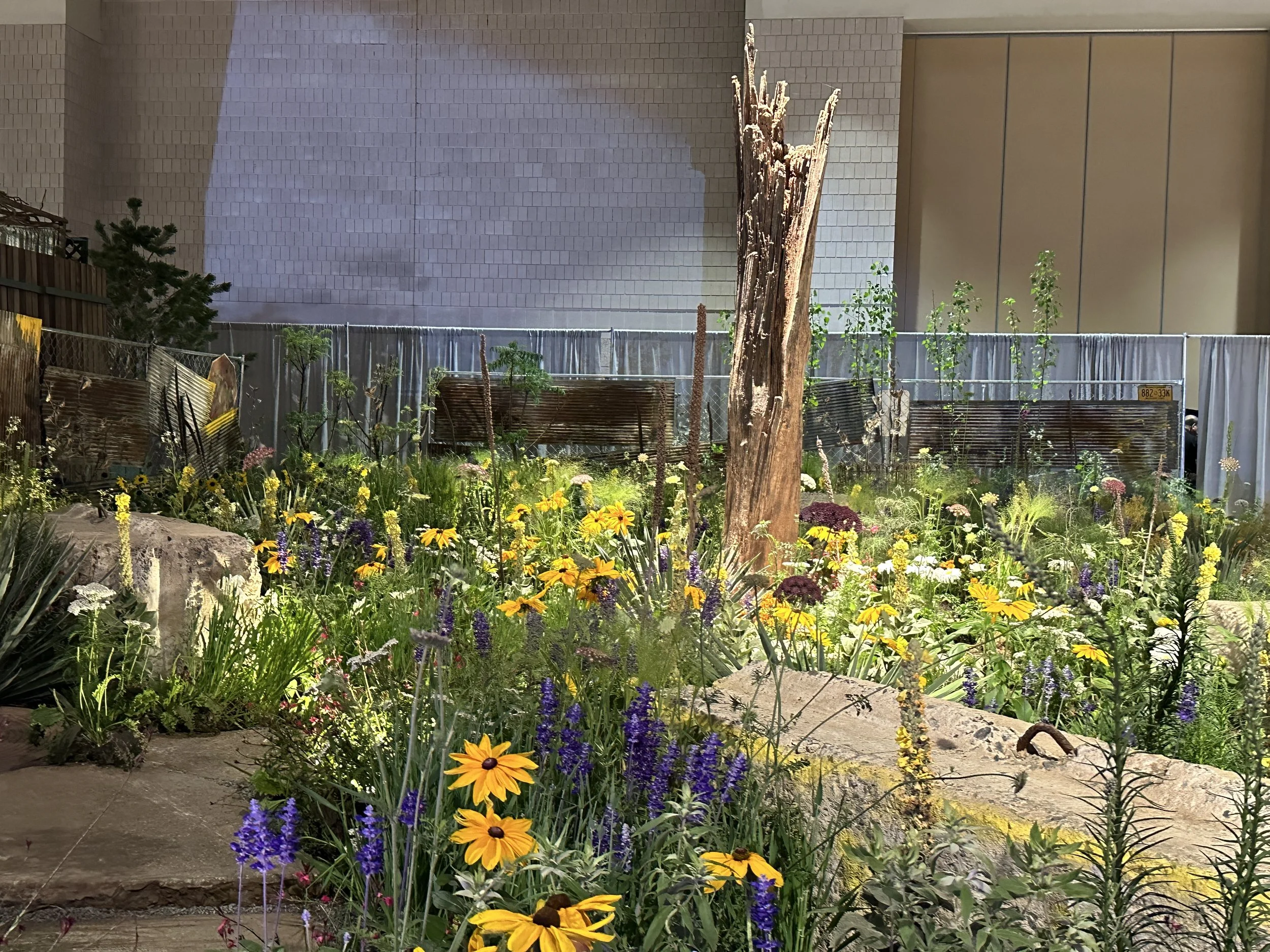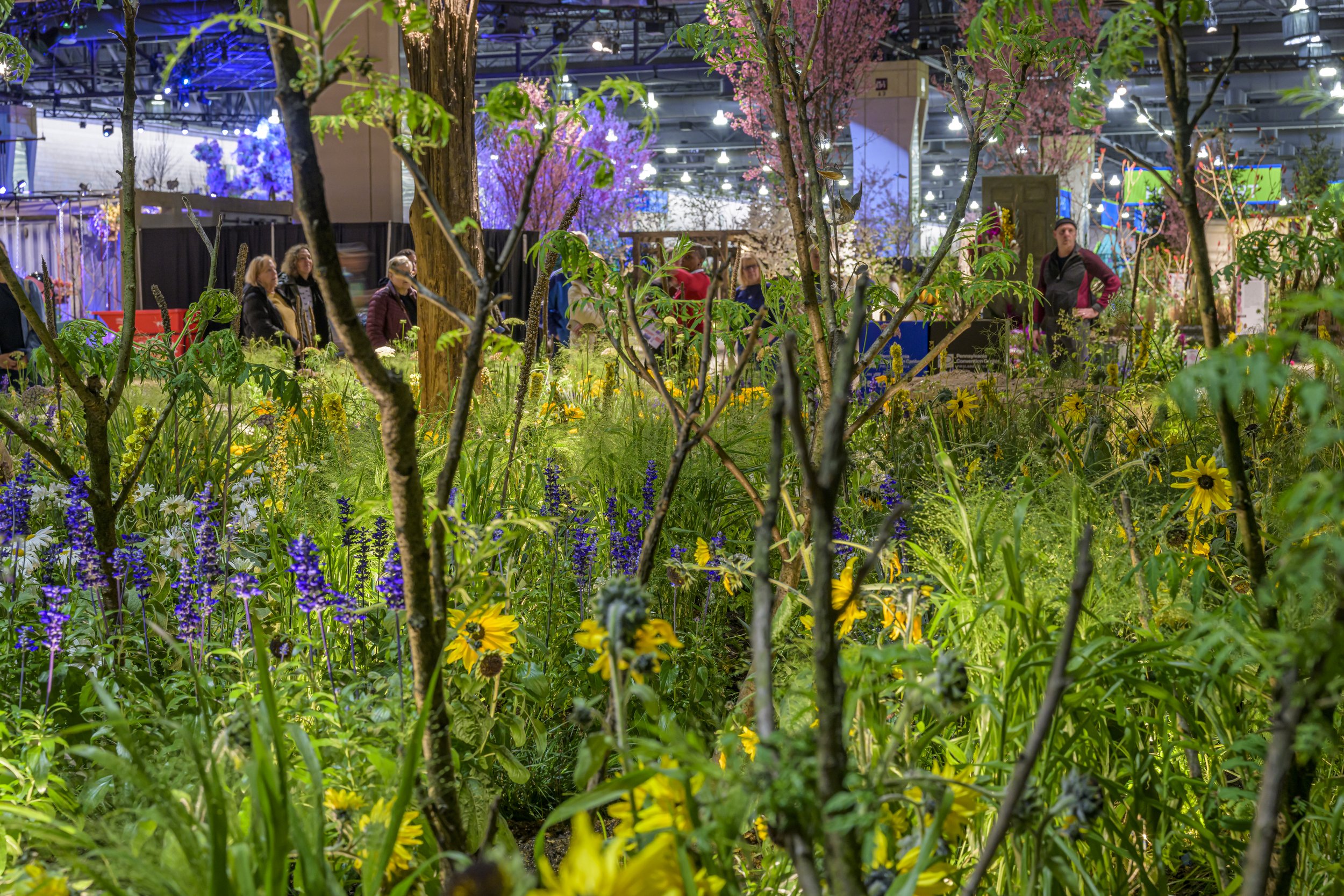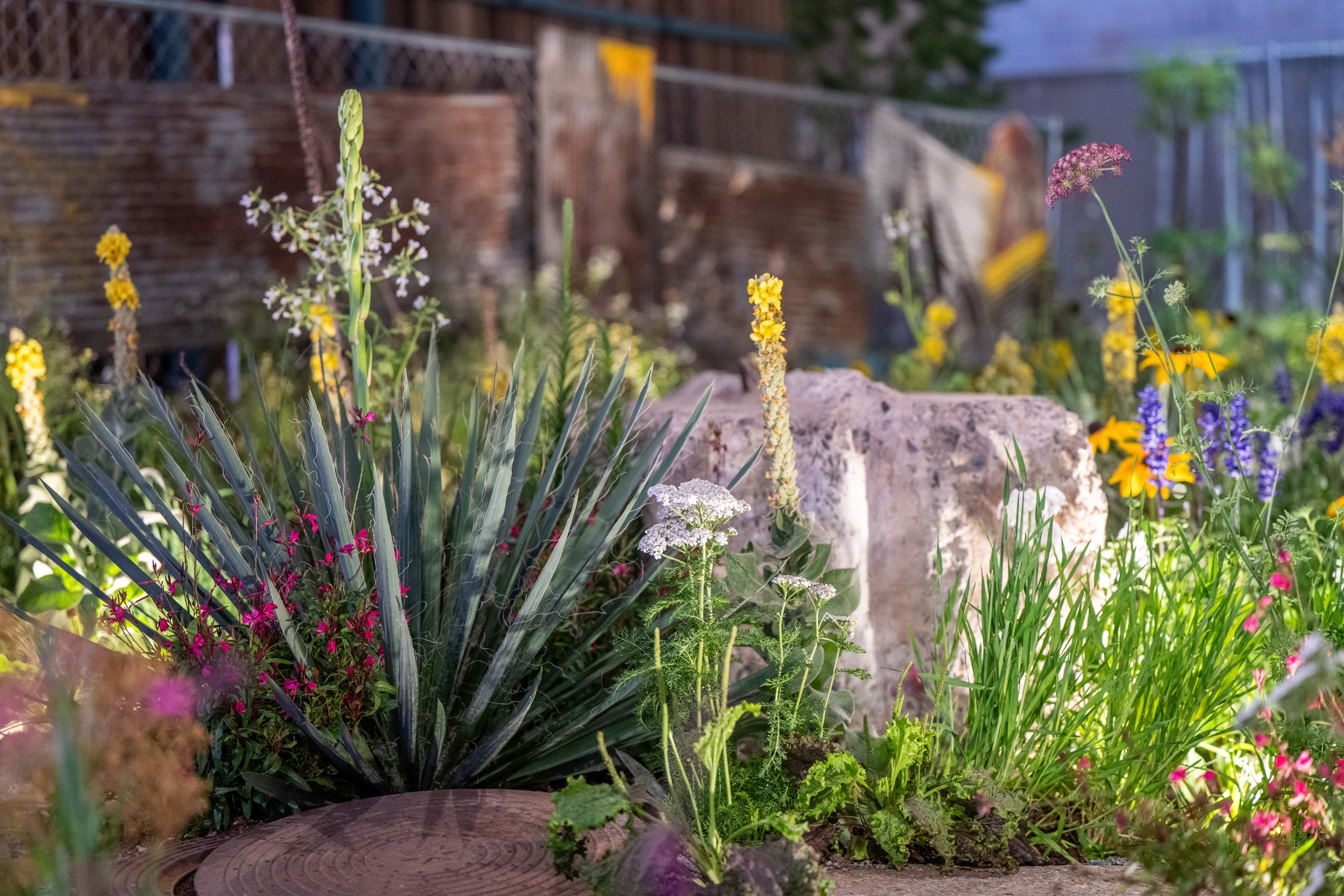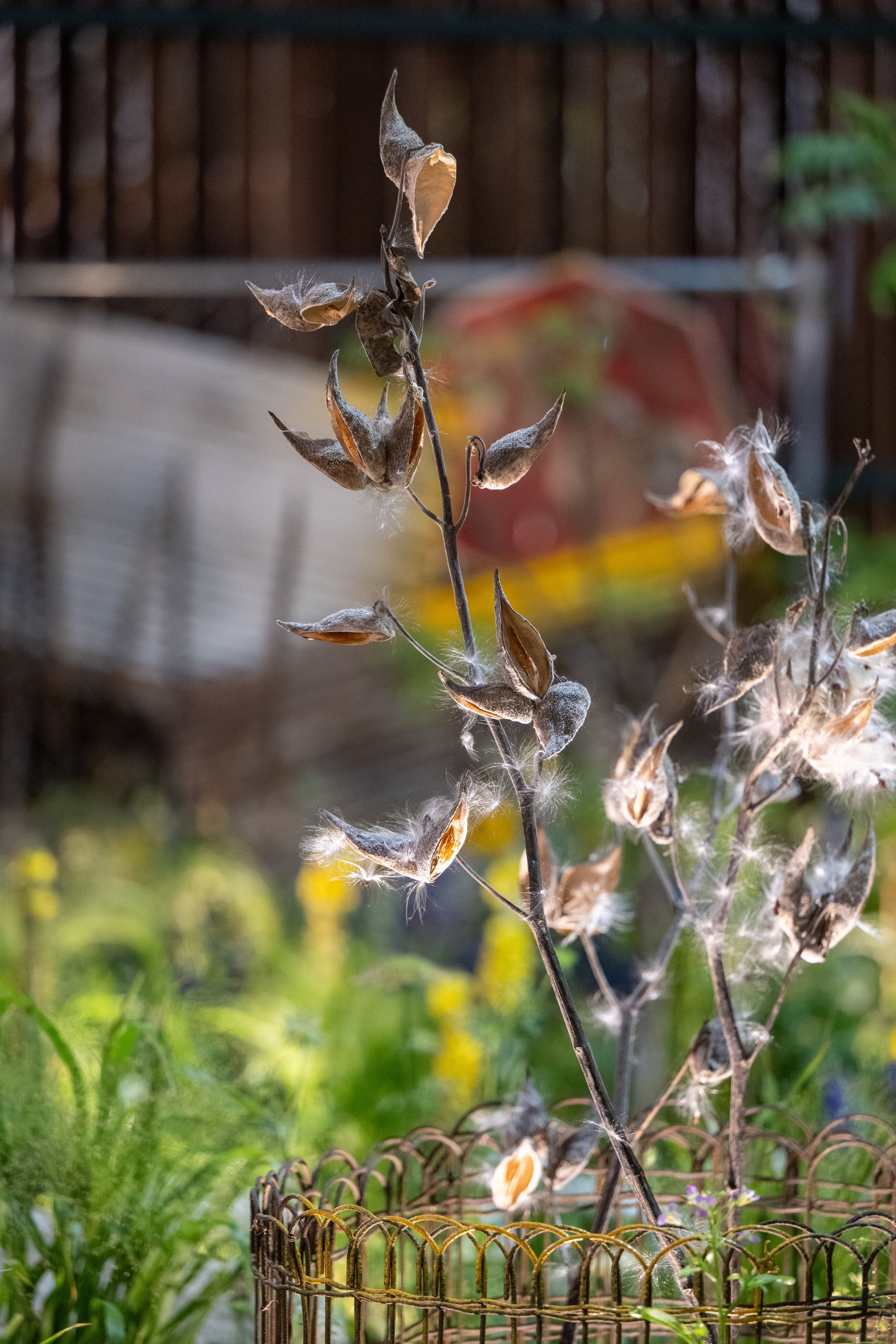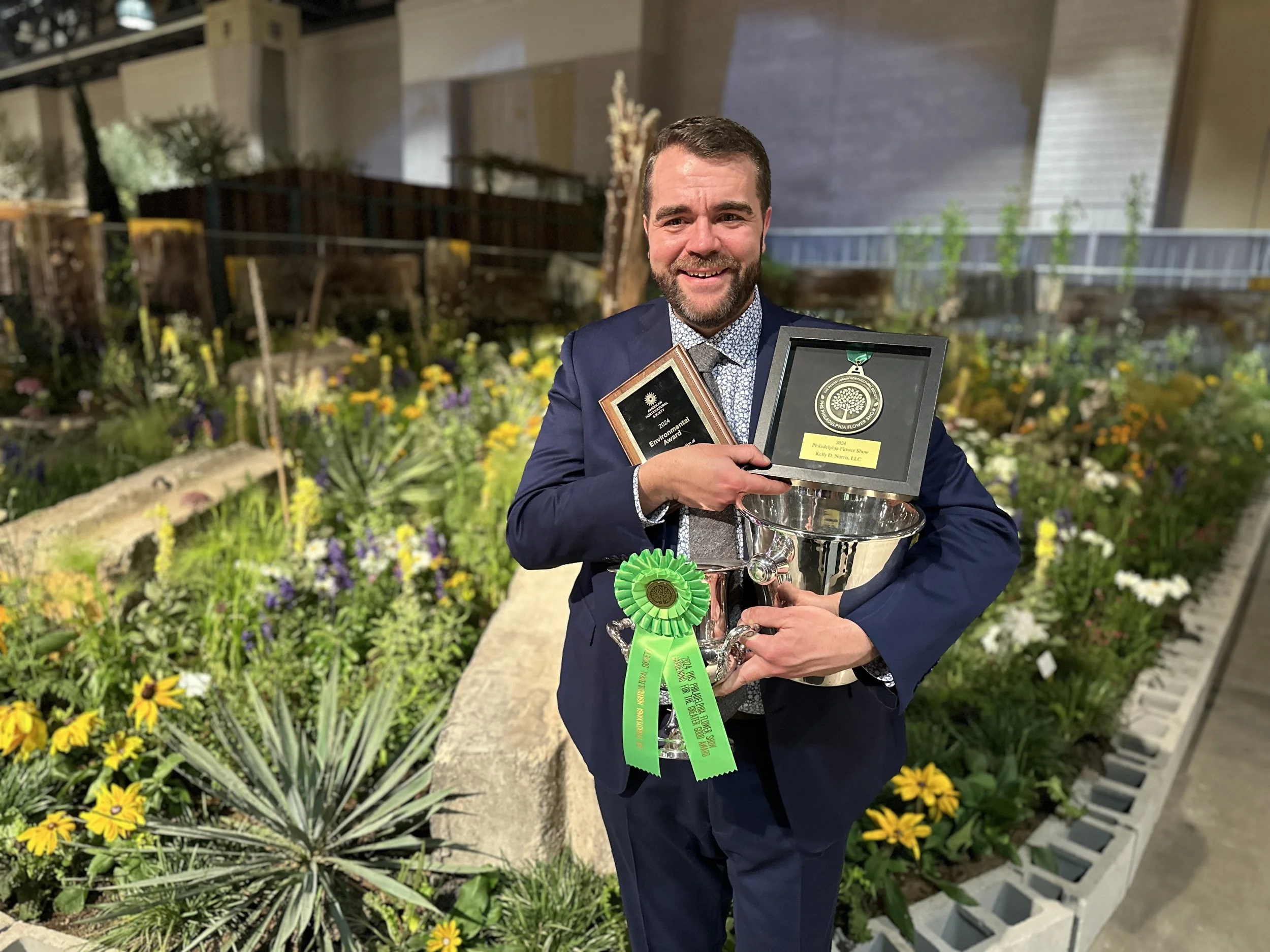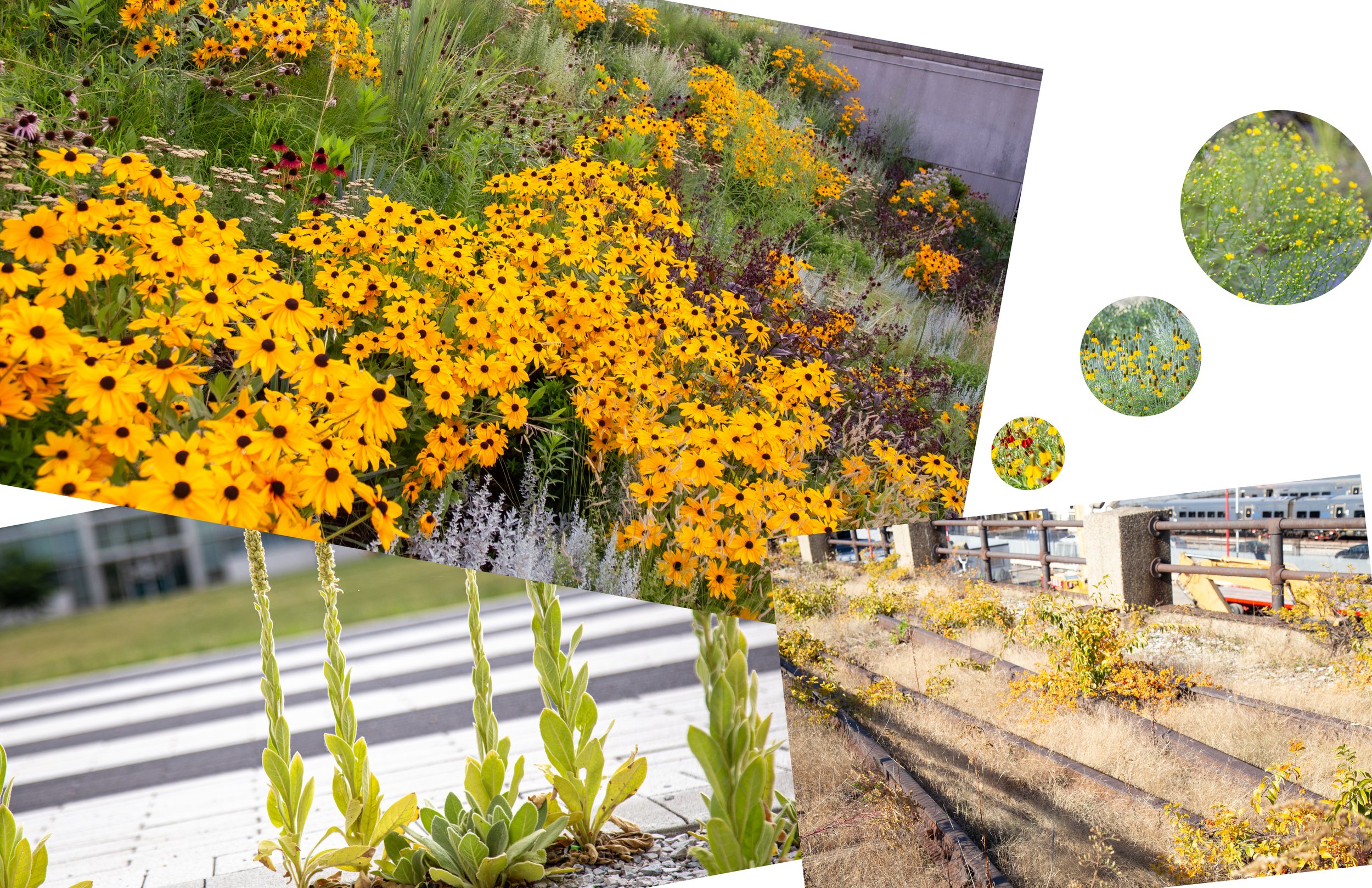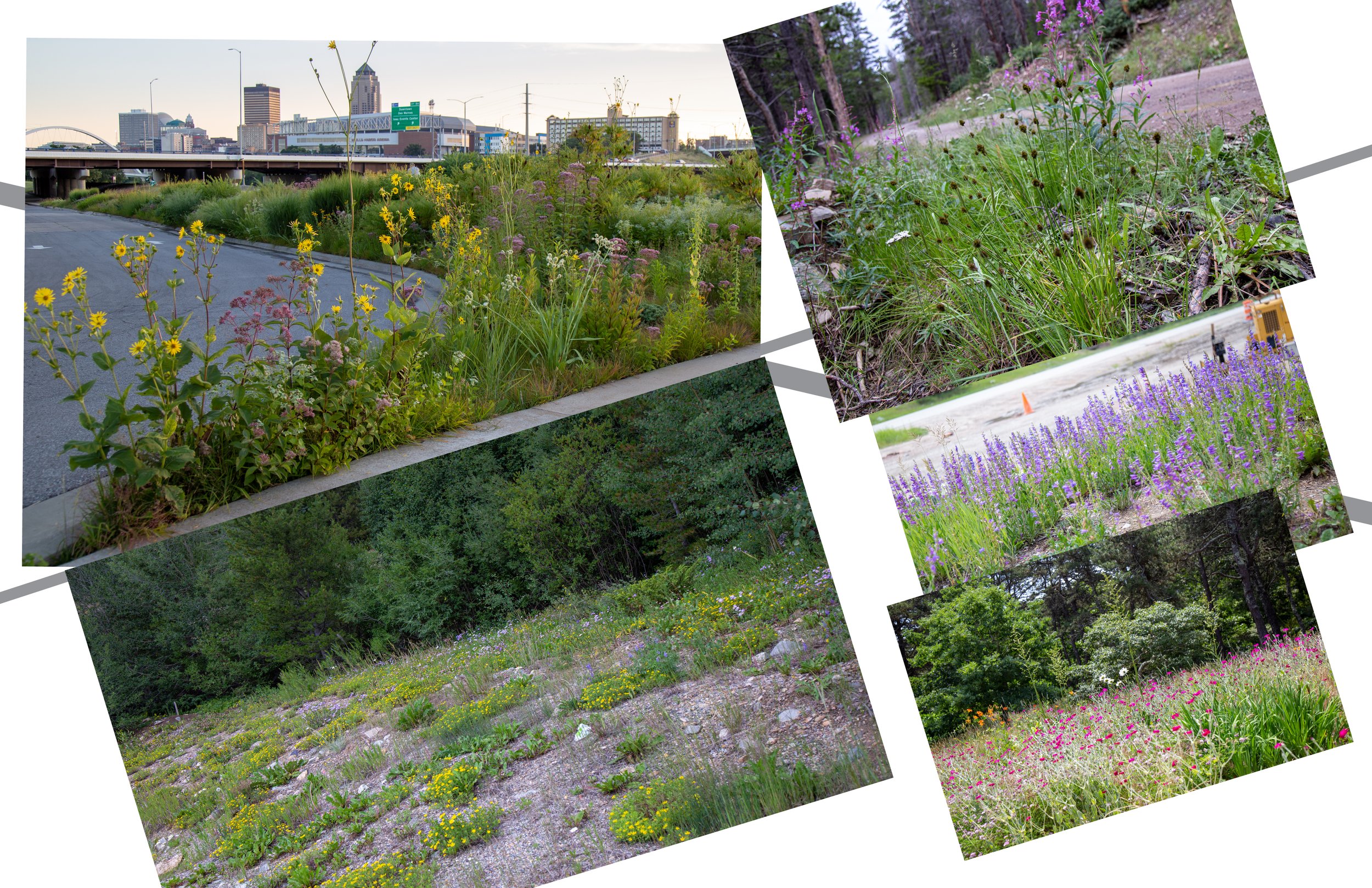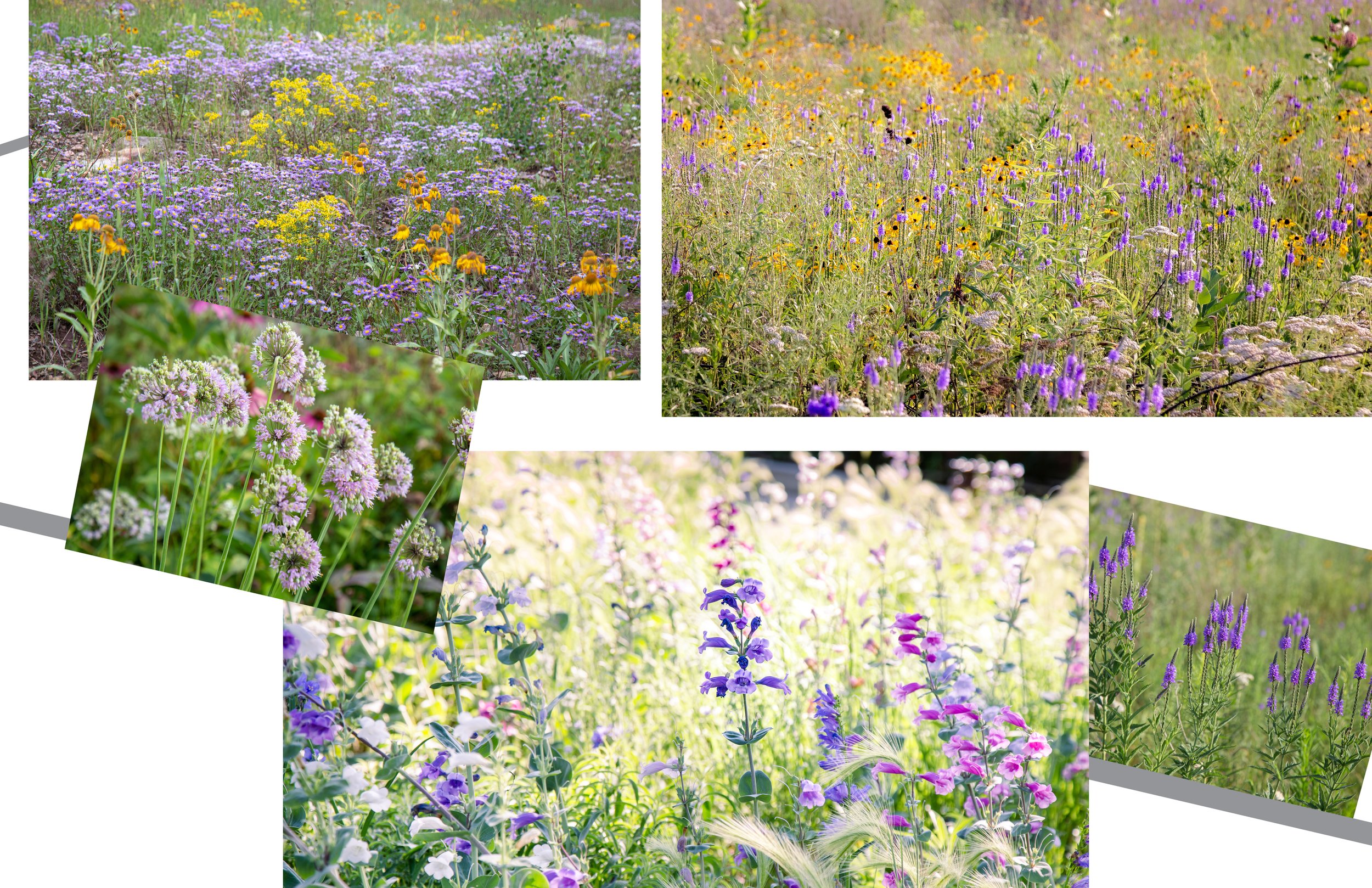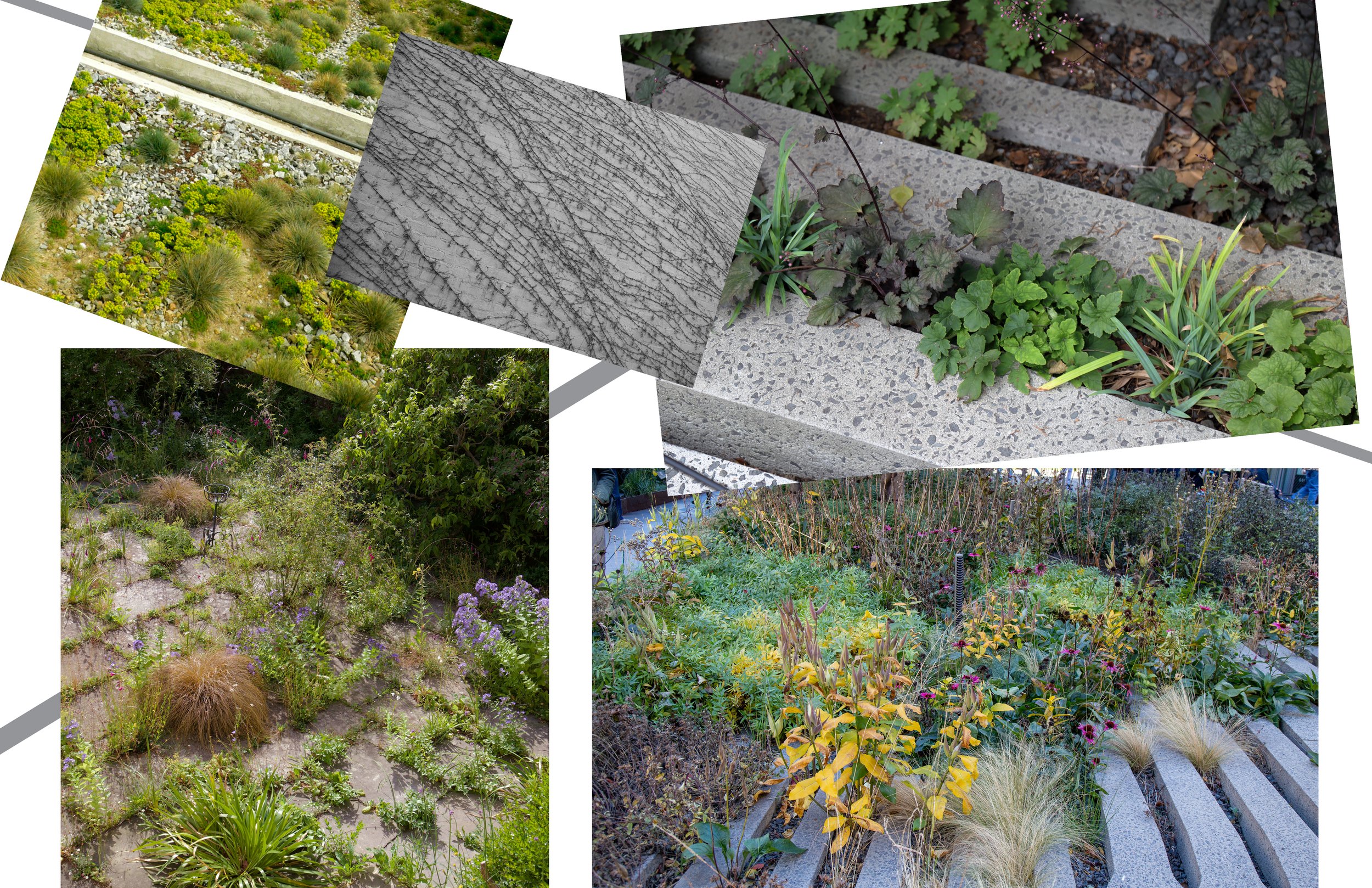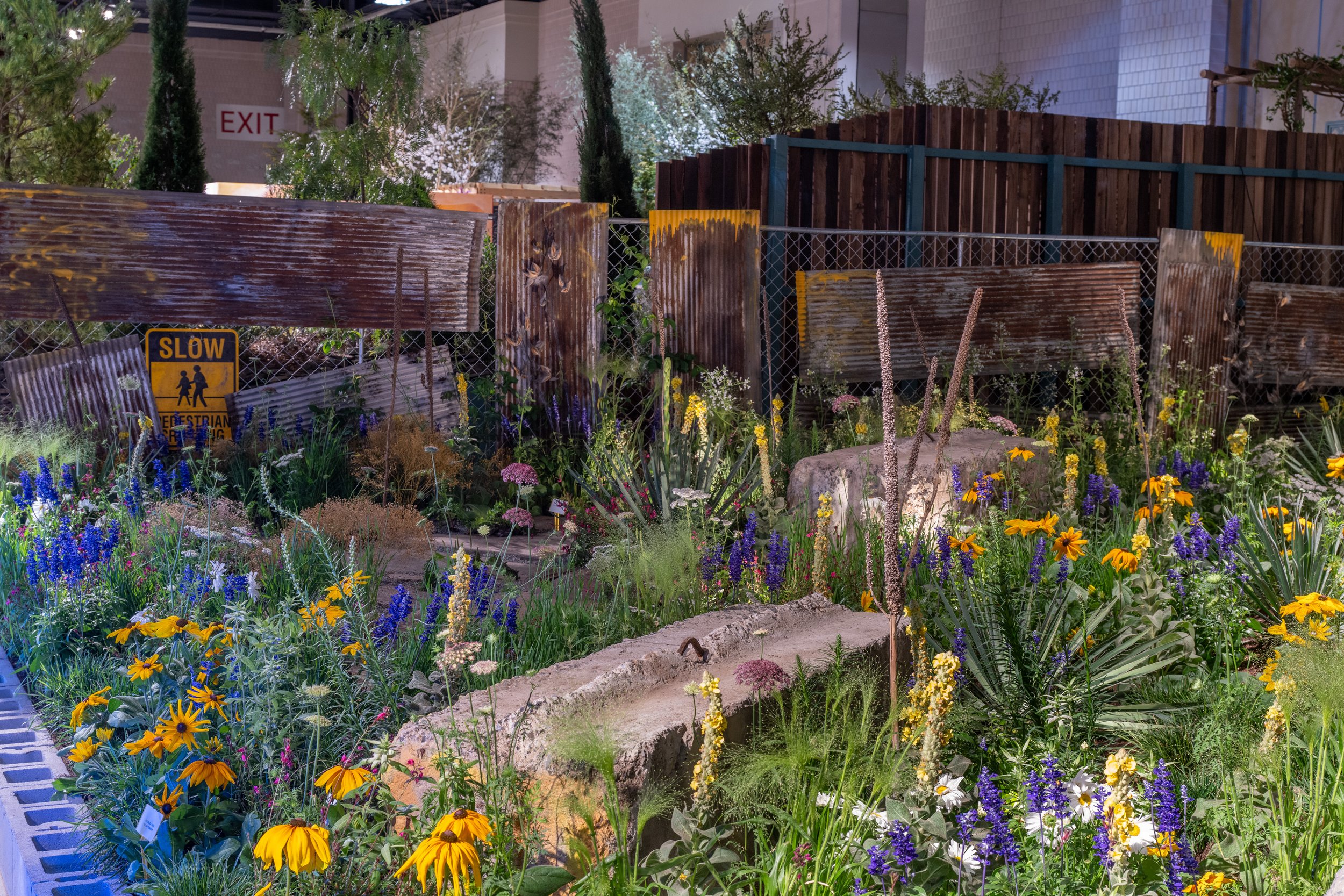
In this era of global change, we need to reimagine the vegetation of cities as homes for future nature.
A Beautiful Disturbance
An abandoned lot, an artifact of the human-urban century, finds new life as a novel ecosystem. This citygarden is a cosmopolitan place for convening humans and nature. The abundance of vacant urban property in America is an opportunity to cultivate landscapes of ecological and human connections.
The 2024 Philadelphia Flower Show theme—United by Flowers—invites us to find common ground in the admiration and appreciation of the plant life around us.
This curiosity of the human spirit, a willingness to step outside the comfortable ecosystems of information we live in, has the power to both restore and reinvent the places in which we live. In that way, I think of the exhibit as an example of a secret garden in plain sight. If you came upon it, you might wonder who made it or if it was planted. You might wonder what grows in a seemingly unlikely place for a garden. Who grows here? We're making a beautiful meadow despite abandonment. The power of flowers can cultivate a new dialogue between people and place.
The planting in the exhibit interprets the ruderal, resilient flora of an abandoned lot with horticultural license. I want viewers to think about whether a place like this is created naturally or if it's created. In other words, what is a garden? How can cities be homes to future nature? What does the city-as-garden look like?
Left alone for a few years or even decades, nature reclaims spaces like this, even though you can still see the marks of what humans left behind. Traditionally, gardens simplify ecological systems with ornamental plant arrangements, suppressing nature’s dynamic qualities. But what if we flipped the script and amplified dynamic, spontaneous vegetation through gardening?
Each plant species chosen for the exhibit occurs ‘out of place’ somewhere across the world, most often because they remain in the wake of human activities. They get labeled ‘exotic,’ ‘invasive,’ or ‘alien.’ We all carry these labels and biases towards the natural world based on our experiences. Some might look at this exhibit and see weeds, while others see wildflowers. The result may be jarring, as if, intuitively, a viewer knows that some of these plants don't belong together. Belonging is a human narrative about context, home, and displacement. We try to shoehorn plants into that narrative, but their stories are more complicated. We have no oral histories of plants that chart their journeys across the landscape in time and space. Like people, plants are incredibly resilient, plastic, and adaptable.

